Can anyone else here confirm that they are able to play 32 bit files and 384kHz sample rate files?
Already removed it from my system as i found the sound quality suitable mostly for casual listening, as it probably should be at the price. Will hook it back on later tonight and test 384/32.
Though I have not tested it, I think it might be prospective.
Adnaco-S3B – USB 3.0 Over Fiber Optic Expansion System
The default DPLL bandwidth parameter of ES9018 is "default best". However, no one knows what the "best" setting actually means.
This is from here.
"There is something I don’t understand about how the Sabre DAC handles the I2S data. There could also be more to the way SPDIF is handled that ESS is not saying. For now, SPDIF allows setting the DPLL bandwidth to “lowest” which is the default setting of the Buffalo II DAC."
He also states that the 'lowest' setting is different for SPDIF than it is for i2s, and details many problems that occur when connecting i2s to the SABRE DAC.
At least I'm not alone....
I'll have to order the firmware from Twisted Pear to try it out. I think a set of transporters might help as well, I was going to get one set for my SACD player anyway, so I'll give it a shot and report back when I try. I might try separating the power supply from the USB cable, but the Transporter feels like a cleaner, better possible solution.
I looked at the link, that is a bit pricey for what I would need it to do.
Thanks for your help,
Aaron.
Hi Guys,
...
2. 384kHz sample rate files do play, but there is some serious instability. Background noise is elevated, and between tracks (no playback but still digital lock) there is a loud whizzing sound.
Here is the test setup:
...
BII with 80MHz clock and Volumite
...
Cheers,
Owen
BII-80 does not work well with 384/352K material. Needs a 100 MHz clock.
I've documented the behavior in my setup here: Musiland 03 I2S to Buffalo II DAC: Playing 352.8Khz Music H i F i D U I N O
Regarding 32-bit, Windows 7 only reports 24 bit capability in the sound control panel - I was wondering about that too.
Standard (at least older as I have not checked newer) Buffalo firmware and clocks below 90.3168MHz for 352.8k and 98.304Mhz for 384k are not optimal or functional. However the ES9018 chip can be programmed to work with 352.8k and 384k with a 80MHz clock..
For the 32bit issue- I expect that to be a Windows / Windows application related issue as Linux works as a charm for me with my 352.8k/32bit AIFF files.
For the 32bit issue- I expect that to be a Windows / Windows application related issue as Linux works as a charm for me with my 352.8k/32bit AIFF files.
Code:
usb-orion-ehci.0-1, high speed : USB Audio
Playback:
Status: Running
Interface = 2
Altset = 1
Packet Size = 1024
Momentary freq = 352800 Hz (0x2c.199a)
Feedback Format = 11.13
Packet Size = 0
Momentary freq = 352800 Hz (0x2c.199a)
Interface 2
Altset 1
Format: S32_LE
Channels: 2
Endpoint: 5 OUT (ASYNC)
Rates: 44100, 48000, 88200, 96000, 176400, 192000, 352800, 384000
Data packet interval: 125 ushaha still no box hey?Hi Guys,
I finally got around to testing the Amanero board this morning with my Buffalo II and NTD1.
Playback is quite good for the most part, but there are a few pretty serious issues I'm hoping can be addressed:
1. There does not appear to be any support for 32-bit playback.
2. 384kHz sample rate files do play, but there is some serious instability. Background noise is elevated, and between tracks (no playback but still digital lock) there is a loud whizzing sound.
...snip..........
Can anyone else here confirm that they are able to play 32 bit files and 384kHz sample rate files?
Cheers,
Owen
yeah sounds like you were lucky with the other setups, as officially 384khz is too much for the 80MHz BII i'll try mine later today and report back on Mac Lion but otherwise basically the same setup
I discovered that playing 24bit sources used much more CPU than playing 32bit sources and filed a "bug" report for MPD.
The result was that the used decoder library (will not be fixed and is not optimal for high-end use) used 2 times the CPU power to decode 24bit compared to 32bit and MPD used again extra CPU to convert the 24bit data to the 32bit data that is sent to the USB adapter.
I am now using a different library that have "normal" CPU usage also with 24bit files.
I run with a highly optimized / tweaked and patched linux 3.5.2 kernel and a optimized and tweaked MPD 0.18, and customized and tweaked firmware for ES9018, and all the hardware is optimized and tweaked - as this is needed for optimum performance.
What I do not understand is that someone can expect a "standard" Windows setup with a ES9018 based DAC with non-optimal firmware and hardware setup can perform optimally above 192k-24bit/32bit..
The result was that the used decoder library (will not be fixed and is not optimal for high-end use) used 2 times the CPU power to decode 24bit compared to 32bit and MPD used again extra CPU to convert the 24bit data to the 32bit data that is sent to the USB adapter.
I am now using a different library that have "normal" CPU usage also with 24bit files.
I run with a highly optimized / tweaked and patched linux 3.5.2 kernel and a optimized and tweaked MPD 0.18, and customized and tweaked firmware for ES9018, and all the hardware is optimized and tweaked - as this is needed for optimum performance.
What I do not understand is that someone can expect a "standard" Windows setup with a ES9018 based DAC with non-optimal firmware and hardware setup can perform optimally above 192k-24bit/32bit..
Last edited:
What should be taken into consideration is that if we are not able to attain a certain level of "plug and play" reliability with these file formats they will never be commercially viable to use for distribution of music.......What I do not understand is that someone can expect a "standard" Windows setup with a ES9018 based DAC with non-optimal firmware and hardware setup can perform optimally above 192k-24bit/32bit..
Hi Guys,
I think a few people missed the main point of what I wrote before:
I've attached a few screenshots to show that I'm not blowing smoke. The exaU2I worked perfectly fine with 32 bit files (no errors from J River) and also played 384kHz files with no noise, and no irregularities when paused. You can call it luck or whatever you like, but you cannot say the BII 80MHz doesn't support 384kHz. It does.
Parts of this could be that the exaU2I supports ASIO, and maybe it's just J River that has problems playing 32 bit files via WASAPI, but either way, it's an issue. If it says there's 32 bit support, I should not have to jump through hoops to get it to work.
It's also definitely not a Windows 7 issue. As I said before, the exaU2I played just fine on the exact same PC.
RayCtech:
I have run bit-perfect tests on everything up to 384k 24b and I can assure you that a "standard" windows setup works just fine. I even ran a test overnight at 24b/192k, and after 16 hours of running there wasn't a single bit error. Not one. That means a simple windows setup provides every bit the same level of fidelity as anything else out there. The jitter levels on most of the devices I've tested are also exceedingly low. Unless you have a system with a noise floor that exceeds -150dB, then you generally don't have anything to worry about with an ES9018 and a variety of USB to I2S converters.
Implying that you need a specific build of Linux and custom firmware to get good performance sounds like a bit of marketing hype to me
I will be trying an isolator as shown in the schematic provided with the Amanero datasheet, and I hope that solves the issue at 384kHz. I'm starting to think that the BII is happier using it's own digital supply voltage to supply the driver for the I2S inputs. The biggest difference between the Amanero and the exaU2I is the isolation and the fact that the BII powers the output stages of the isolator. Maybe it's just very very fussy about grounding and noise, and it's impossible to get good performance without proper isolation.
I'll try in the next few weeks and report back. Hopefully Amanero can comment on the lack of 32 bit support using the WASAPI output more in J River.
Cheers,
Owen
I think a few people missed the main point of what I wrote before:
For reference, when I used an exaU2I in the exact same setup as above, playback of both 32 bit FP and 384kHz files worked perfectly, so I know the rest of the playback chain is not at fault. I have also used XMOS, Musiland, and C-Media solutions in the same set up with absolutely no issues.
I've attached a few screenshots to show that I'm not blowing smoke. The exaU2I worked perfectly fine with 32 bit files (no errors from J River) and also played 384kHz files with no noise, and no irregularities when paused. You can call it luck or whatever you like, but you cannot say the BII 80MHz doesn't support 384kHz. It does.
Parts of this could be that the exaU2I supports ASIO, and maybe it's just J River that has problems playing 32 bit files via WASAPI, but either way, it's an issue. If it says there's 32 bit support, I should not have to jump through hoops to get it to work.
It's also definitely not a Windows 7 issue. As I said before, the exaU2I played just fine on the exact same PC.
RayCtech:
What I do not understand is that someone can expect a "standard" Windows setup with a ES9018 based DAC with non-optimal firmware and hardware setup can perform optimally above 192k-24bit/32bit..
I have run bit-perfect tests on everything up to 384k 24b and I can assure you that a "standard" windows setup works just fine. I even ran a test overnight at 24b/192k, and after 16 hours of running there wasn't a single bit error. Not one. That means a simple windows setup provides every bit the same level of fidelity as anything else out there. The jitter levels on most of the devices I've tested are also exceedingly low. Unless you have a system with a noise floor that exceeds -150dB, then you generally don't have anything to worry about with an ES9018 and a variety of USB to I2S converters.
Implying that you need a specific build of Linux and custom firmware to get good performance sounds like a bit of marketing hype to me
I will be trying an isolator as shown in the schematic provided with the Amanero datasheet, and I hope that solves the issue at 384kHz. I'm starting to think that the BII is happier using it's own digital supply voltage to supply the driver for the I2S inputs. The biggest difference between the Amanero and the exaU2I is the isolation and the fact that the BII powers the output stages of the isolator. Maybe it's just very very fussy about grounding and noise, and it's impossible to get good performance without proper isolation.
I'll try in the next few weeks and report back. Hopefully Amanero can comment on the lack of 32 bit support using the WASAPI output more in J River.
Cheers,
Owen
Attachments
-
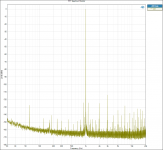 FFT Spectrum Monitor - EXAU2I - 384k 32BF - I2S - NTD1 FULL.png110.6 KB · Views: 794
FFT Spectrum Monitor - EXAU2I - 384k 32BF - I2S - NTD1 FULL.png110.6 KB · Views: 794 -
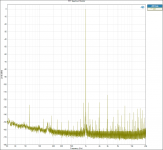 FFT Spectrum Monitor - EXAU2I - 384k - I2S - NTD1 FULL.png111.9 KB · Views: 755
FFT Spectrum Monitor - EXAU2I - 384k - I2S - NTD1 FULL.png111.9 KB · Views: 755 -
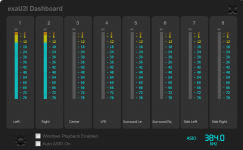 EXA Control Panel 384k.png24.8 KB · Views: 739
EXA Control Panel 384k.png24.8 KB · Views: 739 -
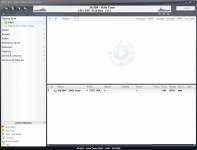 J-RIVER 384k.png150.8 KB · Views: 734
J-RIVER 384k.png150.8 KB · Views: 734 -
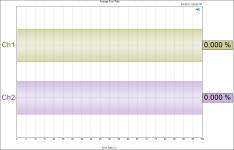 Average Error Rate.png45.3 KB · Views: 717
Average Error Rate.png45.3 KB · Views: 717 -
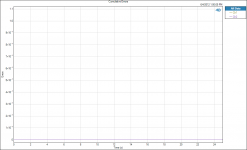 Cumulative Errors.png40.7 KB · Views: 178
Cumulative Errors.png40.7 KB · Views: 178 -
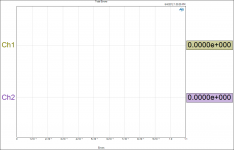 Total Errors.png37.7 KB · Views: 171
Total Errors.png37.7 KB · Views: 171
I havent connected the dac as yet but I just tried playing 384 @ 32bit and its certainly acting like its cool, 32bit is allowed to be selected and audio upsampled to 32/384 plays. this is in Lion in puremusic. will report back
yeah opc, soz I had to pop out, wanted to remind Ray that you had been able to perform the unendingly clever, exclusive and secret expensive miracles with other devices sample rates. ie. it played
it will sometimes do that, but officially the 80MHz XO isnt fast enough for 384 unless youve manually disabled the OSF in the ESS, so if its playing, its lying to itself =) you need >192*Fs for OSF ON, so lets say 256*Fs or 384kHz * 256 = 98.304MHz
edit: ahh but youre running async!!, so 80000kHz/384kHz = 208.3333 which is safely over the 192*Fs, soz I was thinking in whole multiples as ive been doing this math for sync mode lately.
yeah opc, soz I had to pop out, wanted to remind Ray that you had been able to perform the unendingly clever, exclusive and secret expensive miracles with other devices sample rates. ie. it played
it will sometimes do that, but officially the 80MHz XO isnt fast enough for 384 unless youve manually disabled the OSF in the ESS, so if its playing, its lying to itself =) you need >192*Fs for OSF ON, so lets say 256*Fs or 384kHz * 256 = 98.304MHz
edit: ahh but youre running async!!, so 80000kHz/384kHz = 208.3333 which is safely over the 192*Fs, soz I was thinking in whole multiples as ive been doing this math for sync mode lately.
Last edited:
opc mate, contact Ian hes made up some extra standalone boards for the isolator, he might be able to sort you out witrh a couple of PCBs
Last edited:
Hopefully Amanero can comment on the lack of 32 bit support using the WASAPI output more in J River.
It seems to be a J River problem. I also cannot get it to play 32 bits with the WASAPI driver. Foobar, otoh, has no problems with Amanero @ 352/32
It seems to be a J River problem. I also cannot get it to play 32 bits with the WASAPI driver. Foobar, otoh, has no problems with Amanero @ 352/32
Report this as a bug and it is very likely that they will fix it relatively quickly. They seem pretty responsive to customer input which is one of the many reasons I like and use J River.
Question is, is the bug in windows driver or j river.
That's a good question... it could be a limitation of WASAPI or the way Windows reports sound card support.
One of the many reasons I prefer ASIO. It works in all versions of windows, and seems to be the most stable implementation I've used so far in terms of getting true bit perfect reproduction.
I'm secretly hoping Amanero will consider adding ASIO support under Win 7 32/64.
I'll give it a try using Foobar just to confirm, and then I'll submit a bug to j River and see what happens.
Cheers,
Owen
Hi Domenico
As far I can see, "the lucky 60" have get their toys...
Any info about second batch schedule ...?
Rosendorfer
Still waiting for mine..
- Home
- Vendor's Bazaar
- USB to I2S 384Khz - DSD Converter